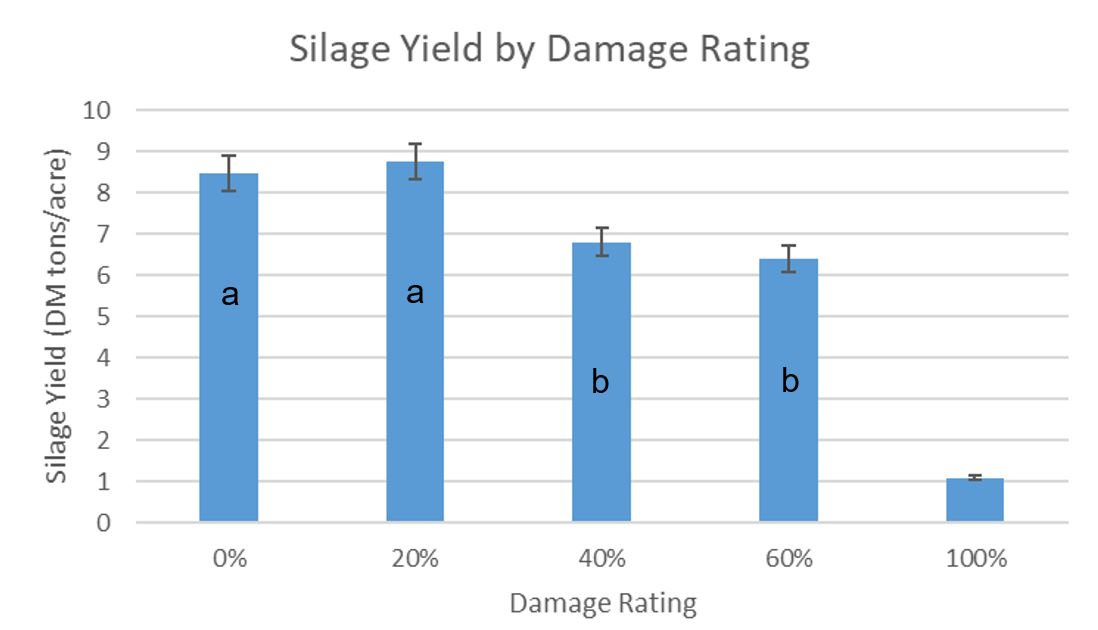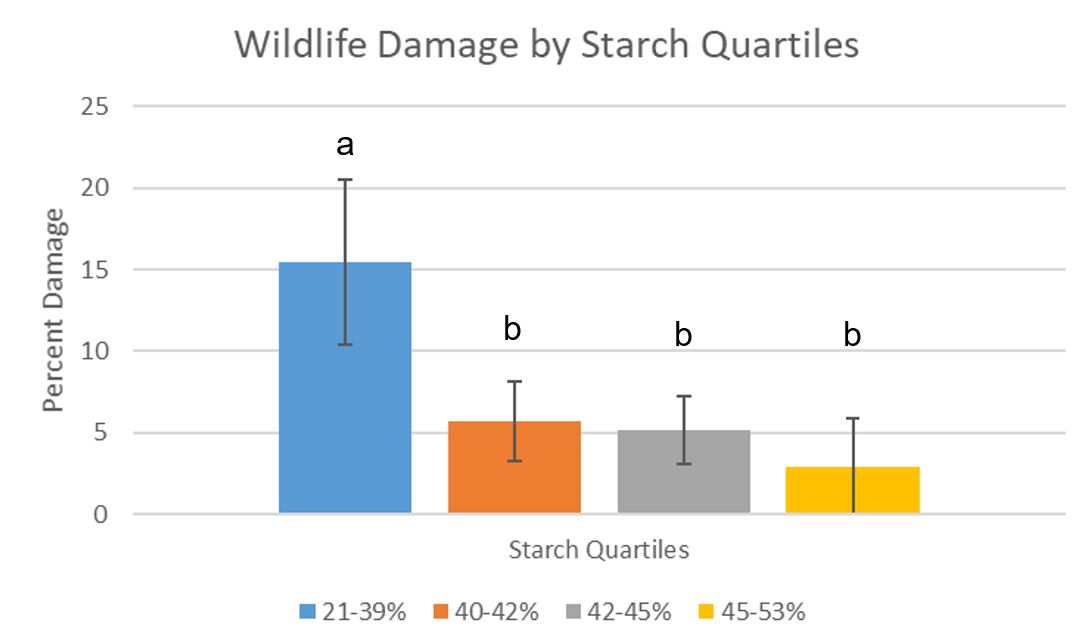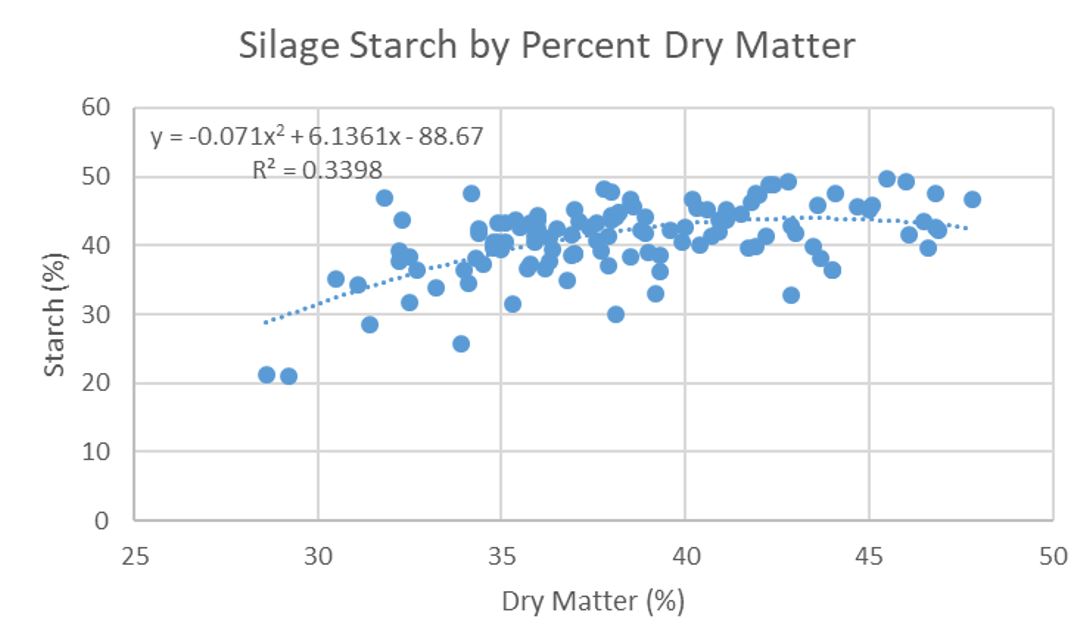Demonstration of wildlife palatability preferences in corn hybrids
A variety’s nutritive characteristics and palatability for key wildlife species should be part of your decision-making process when deciding what and where to plant.

Michigan State University Extension in Michigan’s Upper Peninsula cooperated with the Michigan Corn Performance Trial and Wisconsin Corn Performance Trial programs to evaluate 104 commercial corn hybrids on a cooperating farm in Menominee County during 2018. Mid-season, it was observed that significant wildlife damage was occurring in some plots (Photo 1.). We determined that damage was primarily caused by black bear, although raccoon and deer damaged was also noted.
Ditmer et.al (2015) suggest bear exploit agricultural landscapes for convenient access to calorically rich foods, satisfying their drive to increase body mass in late summer and fall, particularly when natural foods are insufficient. On Sept. 14, the day prior to silage harvest, visual ratings were taken to record the relative amount of bear damage per plot. Ratings were taken on a 0-5 scale to represent the percentage of plants damaged per plot in gradations of 20 percent (1 = 0 percent, 5 = 100 percent). Figure 1 shows the relationship between damage rating and mean corn yield. Plots with 40 percent or greater damage yielded significantly less than plots with 0-20 percent damage (P < 0.0001).

Quality data collected from the silage plots included crude protein, acid detergent fiber, neutral detergent fiber, neutral detergent fiber digestibility and starch. Starch is a tasteless complex carbohydrate functioning as a means of energy storage in plants. Analysis of bear damage by silage quality factors showed that starch was negatively correlated with damage (P-value < 0.0001). Figure 2 shows the difference in mean damage across starch quantiles in our sample. Hybrids in the lowest starch quantile (21-39 percent) experienced significantly more damage.

Previous research from Bacon and Burghardt, 1980, and Preston, 2012, has shown that bears prefer sweet foods. While we did not measure sugar directly, there is a well-known relationship between simple sugars and starch in corn. As corn matures, sugar is converted to starch, as demonstrated by Figure 3 showing the correlation between starch and dry matter concentration in our samples. We therefore hypothesize that black bear may prefer corn hybrids that have higher sugar content based on delayed maturity or a genetic predisposition for sugar versus starch accumulation (i.e., sweet corn).

This preliminary research into food preferences of wildlife may help growers improve variety selection in regions with high densities of wildlife species that tend to exploit agricultural resources. A variety’s nutritive characteristics and palatability for key wildlife species should be a part of grower’s decision-making process when deciding what and where to plant.
This research identifying forage quality factors that are important for wildlife preference will be continued in corn and expanded to soybeans in 2019. Research looking into other wildlife management techniques like planting a wildlife “trap crop” or spraying a repellant is also underway.
For additional information, contact Monica Jean at 906-783-3032 ext. 106 or atkinmon@msu.edu.



 Print
Print Email
Email




